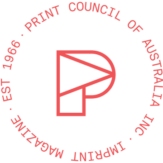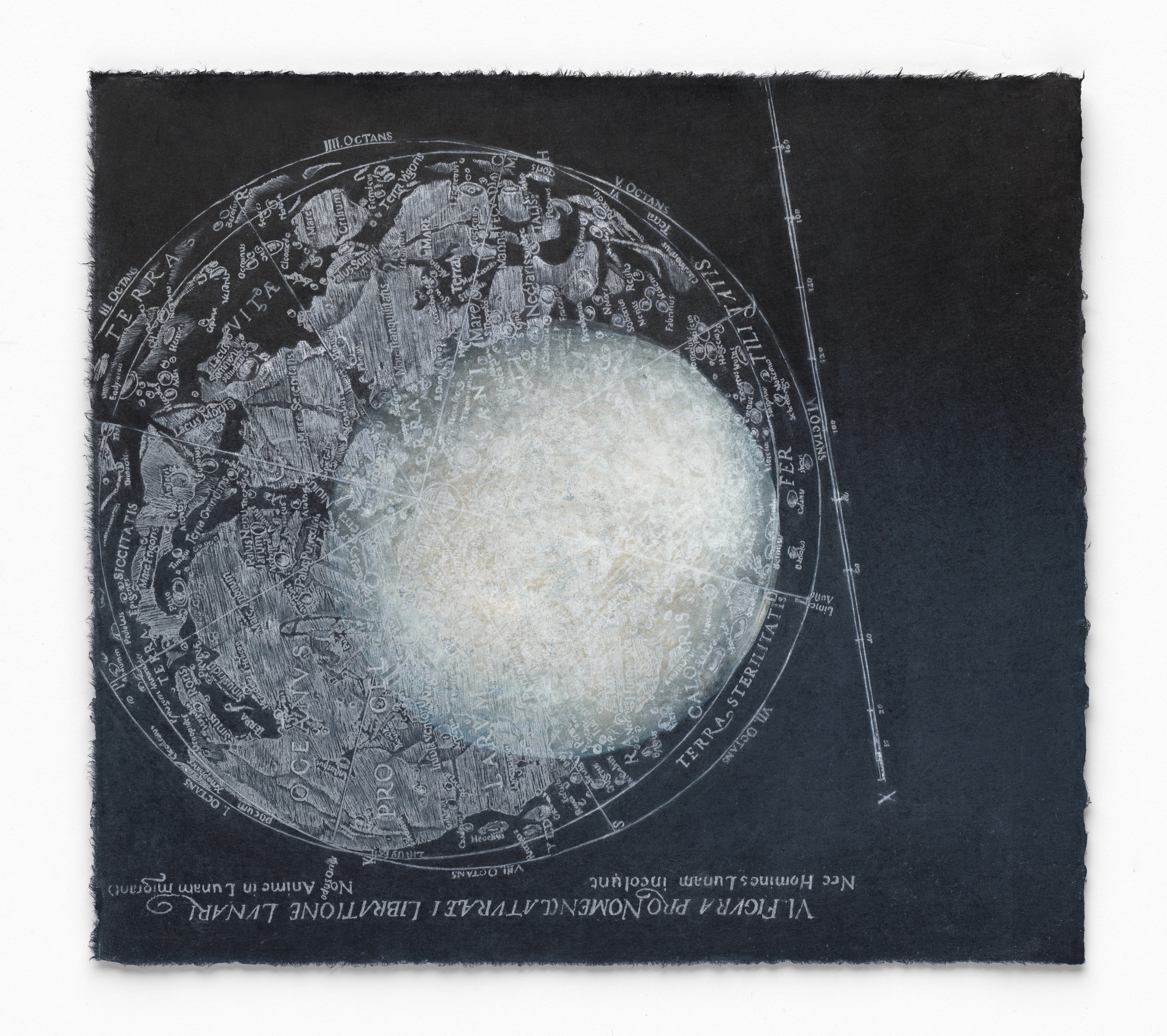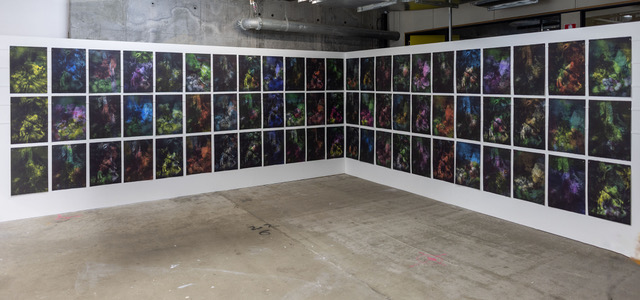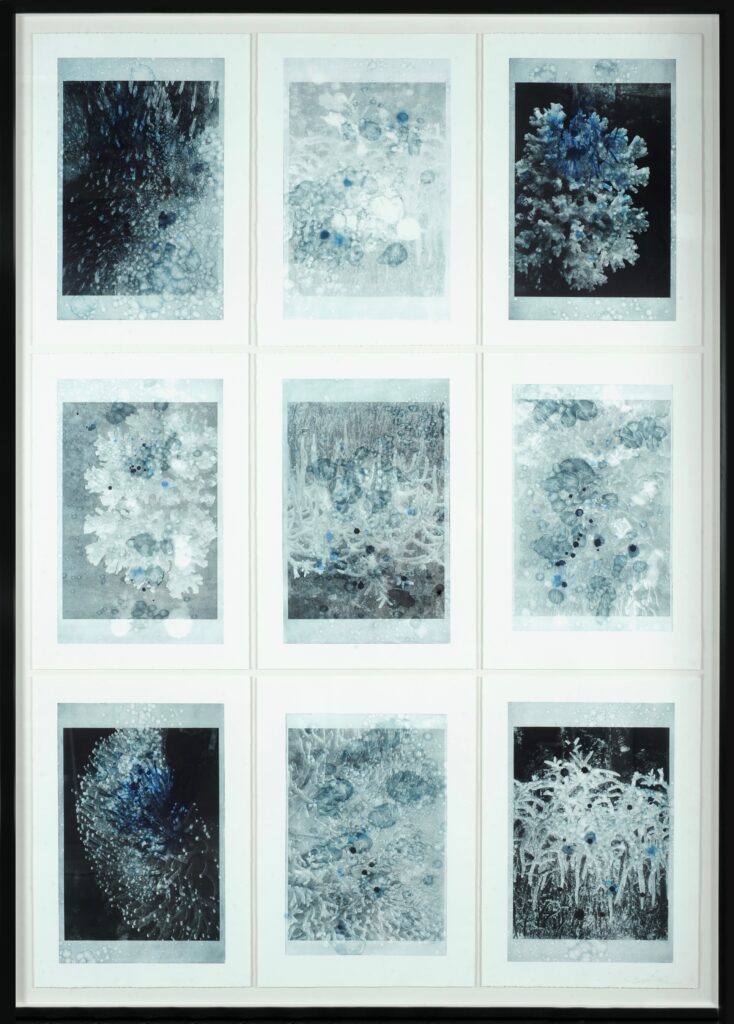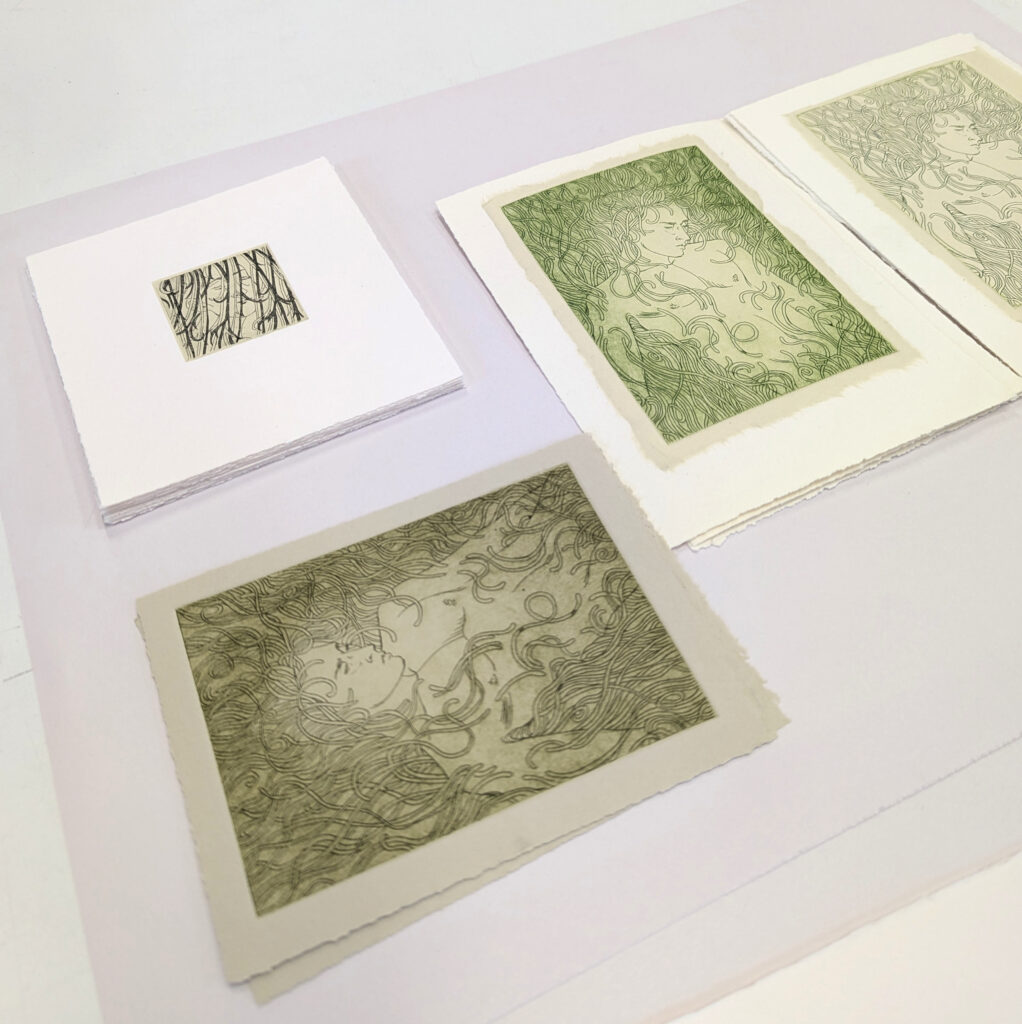Q&A: Sea Sings, Lumen and Wings Realm
Dr Clare Humphries discusses the latest exhibition at the PCA Gallery.
7 August, 2023
In Exhibitions,
Printmaking, Past Exhibitions
Above:
Clare Humphries
Seas of Delirium (South side up), 2023, ink and dry pigment on paper; hand-sanded reduction, linocut print with direct-trace drawing, 44.5 x 48.5cm (paper)
—
Q: How did the creation of the artwork develop, technically and conceptually?
A: The work Observances II (2022) emerged from my experiences observing Moonrise in London where I have lived for the past five years. Moonrise is of particular interest to me since it is then that we experience what scientists call the Moon Illusion, when the Moon can appear unexpectedly close, despite the fact that it isn’t. This work takes multiple instances of observation and organizes them into an orbital sequence. Once installed, each individual ‘picture’ inter-relates to become a composite ‘image’ in which the Moon travels through time and space, shifting in relation to the viewer. I have also applied subtle forms of perceptual haze on the surface—sheer layers of pigment and overlaid paper—to invite the eye to look both at and through the surface, and for vision to potentially waver so that it is the observer who may start to feel mobile.
I made Seas of Delirum (South side up) and Perspectus Australis (with feet opposite) since returning from London. Early-on in my time there I came across Frances Place’s etching Prospectus Australis (1676) from the series Vivarium Grenovicanum in the British Museum collection. I pinned up a copy in the studio because I was curious about how notions of the “South” had developed. This print was made before Europeans had charted and invaded the Australian continent, but the use of Latin in the print shows how the idea of Australia was being constructed in the European consciousness.
Prints and celestial charts of the 17th Century, when early telescopes were first being employed, imagined the skies of Terra Australis Incognita (Latin for ‘Unknown Southern Land’) as upside-down. The European notion of Australia as an inverted continent is also reflected clearly in the idea of the Antipodes (Latin for ‘with feet opposite ours’) which positions the Southern Hemisphere in reverse, and also in reference to a Northern perspective. In Seas of Delirium (South side up) (2023), and Perspectus Australis (with feet opposite) (2023), I have re-transcribed and flipped segments of celestial charts and prints from the early telescopic period, in order to re-orient and articulate a Southern position. These transcriptions sit over, and are aligned with, images of the rising moon made from my observations on the Western Coast of Australia before I left for the UK.
Q: How does your work connect with the work of the other artists in the exhibition?
A: There are some obvious connections that run through our methodologies, such as the way we each use walking and observing to encounter places and species. Martin King’s work pages from the diary of lost souls for example, was informed by his wonderings through Melbourne’s Fitzroy Gardens; it was there he encountered the English Ash and Peppermint Gum that form the hybrid silhouette in the work. Jo Darvall’s work also often arises from her frequent walks in nearby forests during which she draws to articulate her sensate encounters with bushland. Her prints in the Hydrosphere series are the result of walks she undertook in South-East Asia whilst exhibiting in local galleries; this is where she encountered the hyper-responsive Lotus plant over and over again. Like Jo and Martin, I also find myself walking, in my case to try to get “closer” to the Moon; to find places where I can see the horizon and hopefully escape a little light pollution.
Q: What is it about the printmaking experience that you most appreciate?
A: The continual back-and-forth between myself and the mechanical (or chemical) aspects of printmaking is something I find very generative. There are moments where my presence feels crucial, like when I am drawing or carving a block, but these moments are continually punctuated by the need to give-over to something else, such as when the paper passes under the pressure of the press for example. That movement back-and-forth feels conversational. In that conversation, I become aware of both the immediacy of making, as well as the mediating effects of printmaking processes. I think there is often a double logic embedded in prints, and in their making, where the media is both undeniably present and yet can also disappear “behind” the subject. As a maker, I experience this as a form of co-production, where I become aware of an ecology of elements that intersect and interact in order for the work to manifest.
—
Sea Sings, Lumen and Wings Realm
Works by Jo Darvall, Clare Humphries and Martin King
Print Council of Australia Gallery, Studio 2 Guild, 152 Sturt St, Southbank
1 – 22 September, 2023, OPENING RECEPTION: Thursday 1 September, 5-7pm
GALLERY HOURS Tues-Fri 10am-4pm
—
Join the PCA and become a member. You’ll get the fine-art quarterly print magazine Imprint, free promotion of your exhibitions, discounts on art materials and a range of other exclusive benefits.
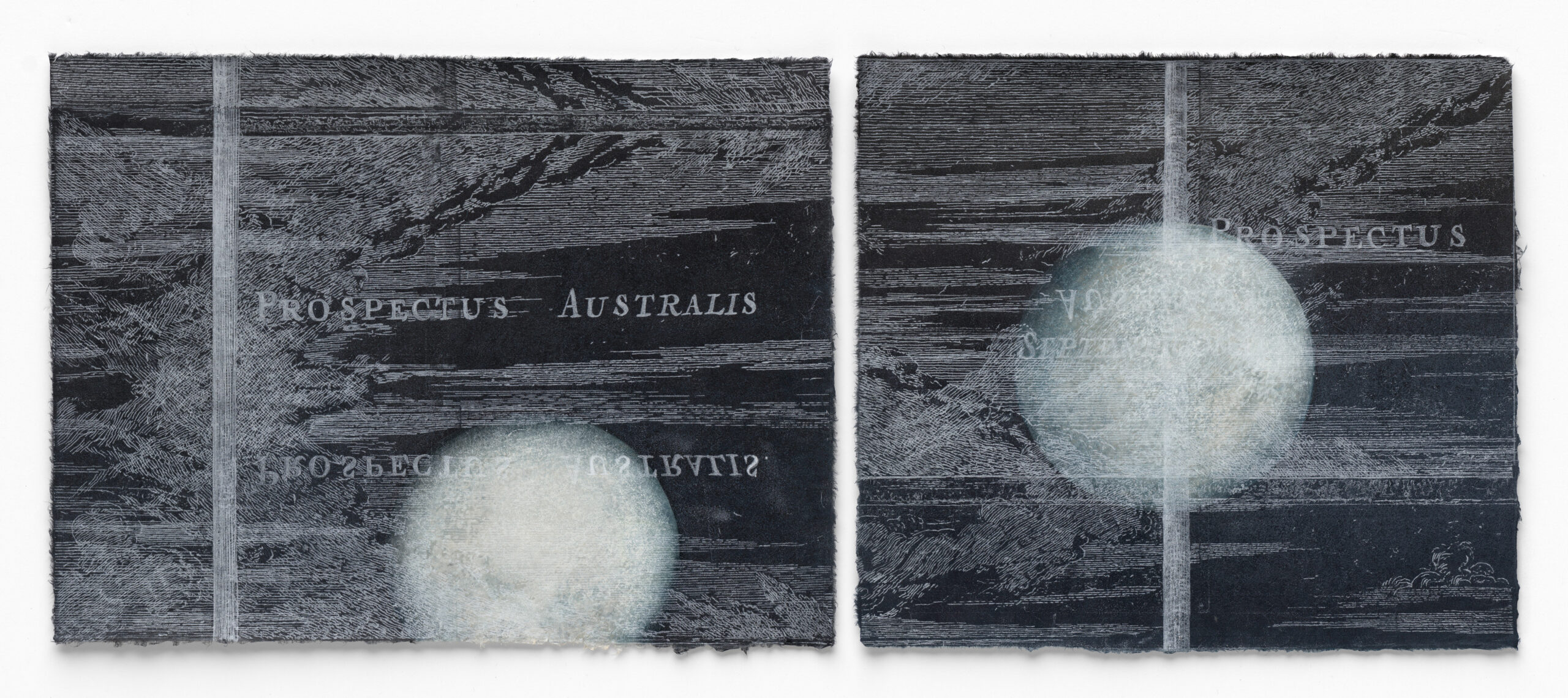
Above:
Clare Humphries
Perspectus Australis (with feet opposite), 2023
Ink and dry pigment on paper; hand-sanded reduction
linocut print with direct-trace drawing
44.5 x 112 cm (paper)
